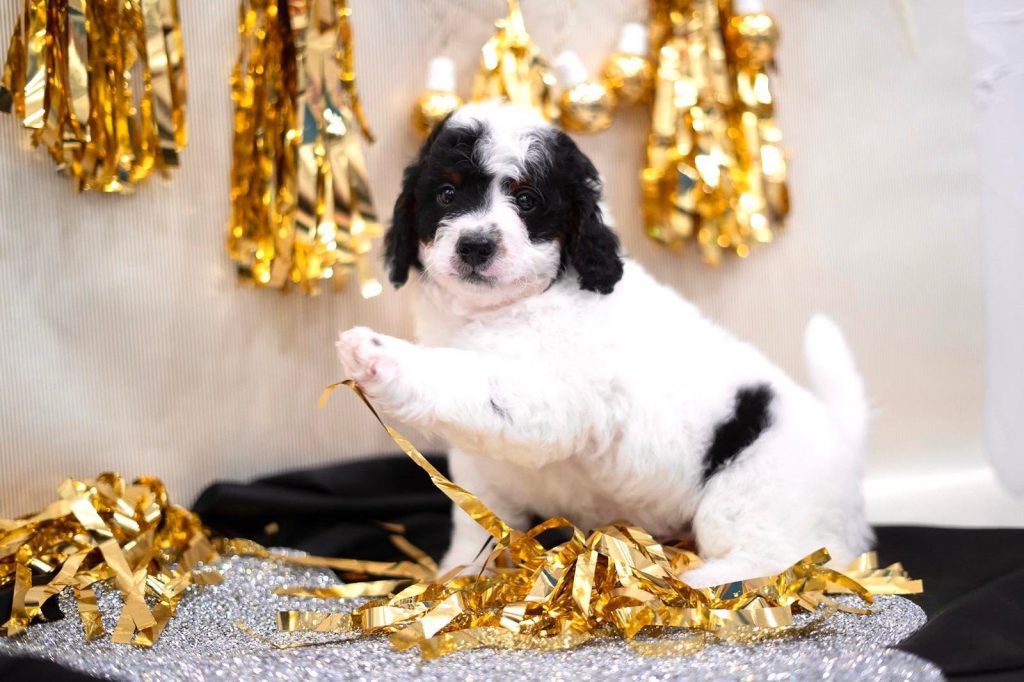Bringing home a new puppy is an exciting and joyful experience—but if you’re living in Texas, the heat can bring some unique challenges when raising your four-legged friend, be it Bernedoodle or any other dog breed. With summer temperatures often soaring past 100°F (38°C), it’s essential to understand how to keep your puppy safe, comfortable, and healthy in such an extreme climate.
Whether you’re a first-time dog owner or adding a new puppy to your pack, this guide will help you navigate the warm Texas weather with confidence and care.
1. Choose the Right Time for Outdoor Activities
Puppies need exercise and mental stimulation, but timing is everything in the Texas heat. The sun is typically strongest between 10 a.m. and 4 p.m., so it’s best to plan walks, potty breaks, and play sessions early in the morning or later in the evening when the ground is cooler and the air more breathable.
Pro Tip: Before stepping outside, place your hand on the pavement. If it’s too hot for your hand, it’s too hot for your puppy’s paws.
2. Keep Them Hydrated—Always
Heat means your puppy can dehydrate quickly. Always provide access to fresh, clean water—especially during outdoor play or walks. Consider bringing a portable water bottle and bowl when you’re on the go.
Some signs of dehydration in puppies include:
- Dry gums
- Lethargy
- Excessive panting
- Sunken eyes
If you notice any of these, move your puppy to a cool place immediately and offer water. Severe cases require a vet’s attention.
3. Provide Plenty of Shade and Cooling Options
Even brief exposure to intense sun can cause overheating in young dogs. If your puppy spends time outside, make sure there’s adequate shade, whether it’s natural (like trees) or artificial (like canopies or umbrellas).
You can also give your puppy:
- Cooling mats
- Frozen treats
- Kiddie pools for a splash and play
- Fans or misting systems for a gentle breeze
These small touches go a long way in keeping your pup comfortable.
4. Watch for Signs of Heatstroke
Puppies can’t regulate their body temperature as efficiently as adult dogs. That’s why it’s critical to know the signs of heat exhaustion or heatstroke, which can be life-threatening.
Watch for:
- Heavy panting
- Bright red tongue or gums
- Vomiting or diarrhea
- Disorientation or collapse
If you suspect heatstroke, take immediate steps to cool your puppy down (using water and shade) and contact your vet urgently.
5. Avoid Overexertion
While it’s tempting to enjoy active playtime, overexertion in hot weather can quickly become dangerous. Puppies don’t always know when to stop, so keep activities short and manageable.
Use mental stimulation like puzzle toys or indoor training games during the hottest parts of the day to burn off that puppy energy without risking overheating.
6. Grooming and Coat Care
Proper grooming is especially important in the extreme weather of Texas. Regular brushing helps prevent matting and improves airflow through your puppy’s coat.
However, avoid shaving double-coated breeds (like Bernedoodles or Goldendoodles), as their coat actually insulates them from heat and sunburn. Instead, consult a professional groomer about proper summer coat maintenance.
7. Never Leave Your Puppy in a Parked Car
This one can’t be emphasized enough: even a few minutes in a parked car can be deadly for a puppy. On a hot day, temperatures inside a car can spike dangerously within minutes—even with windows cracked.
If your puppy can’t go inside with you, it’s best to leave them at home in a safe, cool environment.
8. Create a Cool Indoor Haven
When your puppy is inside, make sure they have a comfortable, shaded area to rest. Fans or air conditioning can help regulate temperature, but you can also provide a cool tile floor, a wet towel to lie on, or a raised bed to allow airflow underneath.
9. Adjust Feeding Schedules
In extreme heat, some puppies may lose their appetite. You can try feeding during cooler parts of the day, and always ensure food is stored properly to avoid spoilage.
Also, avoid leaving food out for extended periods in warm conditions to prevent contamination.
10. Choose the Right Breed and Breeder
Some breeds tolerate heat better than others. Breeds like Cavoodles, Goldendoodles, and Bernedoodles—with their moderate energy levels and loving temperaments—can adapt well to the Texas climate if properly cared for.
When getting a puppy, choose a reputable Texas-based breeder who understands local conditions and raises their dogs with climate considerations in mind.
Final Thoughts
Raising a puppy in Texas’s warm climate takes a little extra planning, but with the right care, your puppy can thrive and grow into a happy, healthy dog. By following these tips, you’re giving your new companion the best start in life—one filled with fun, safety, and unconditional love.
If you’re ready to bring home a heat-happy pup, check out our available litters of Bernedoodles—raised with love right here in Texas.




